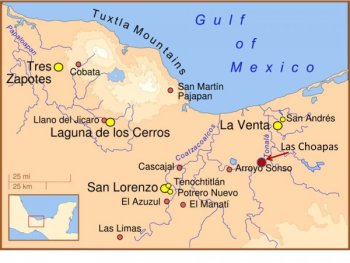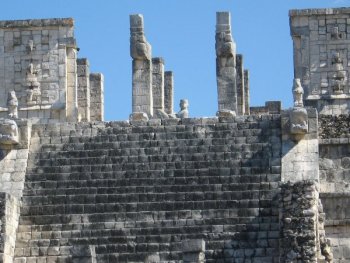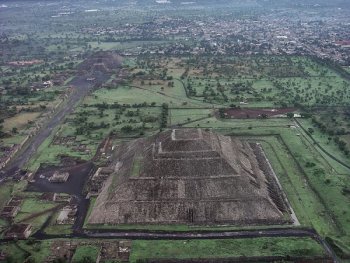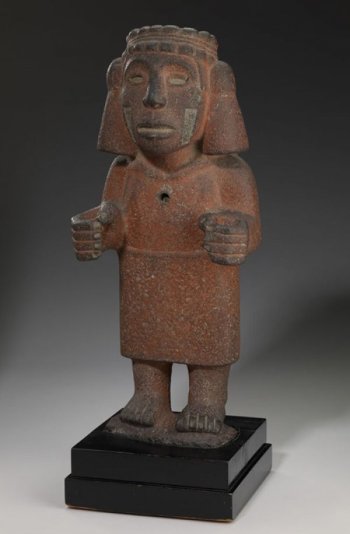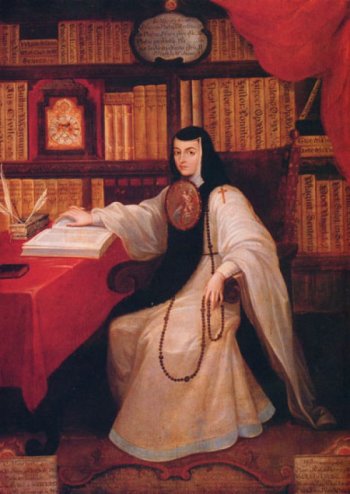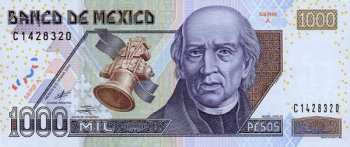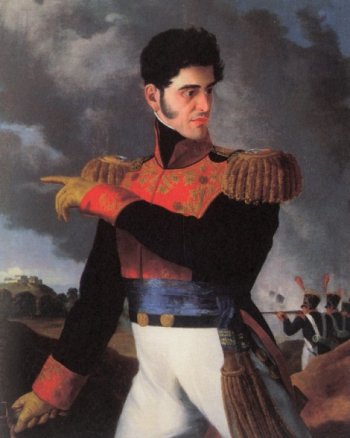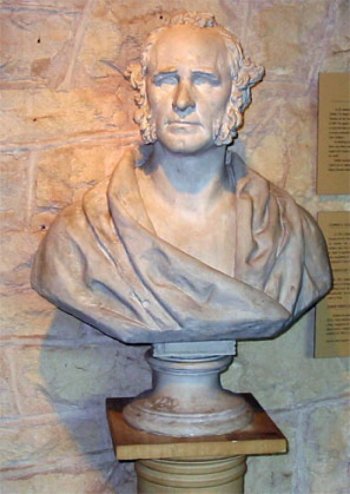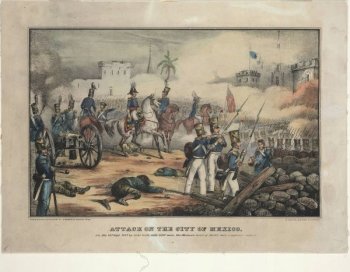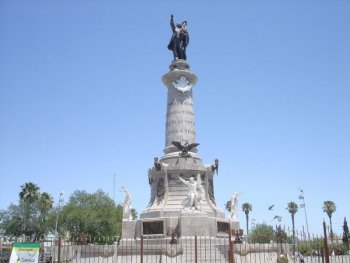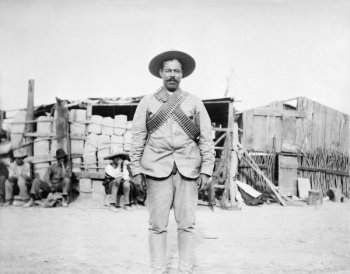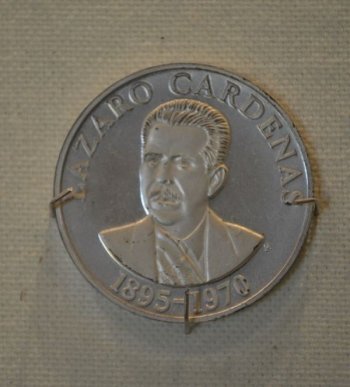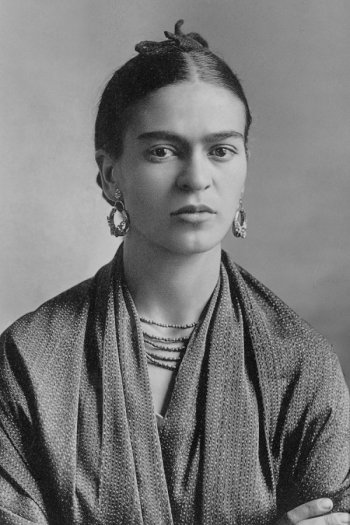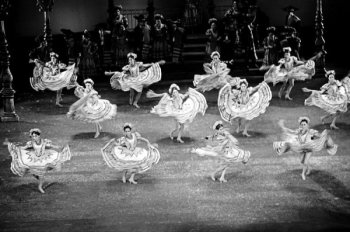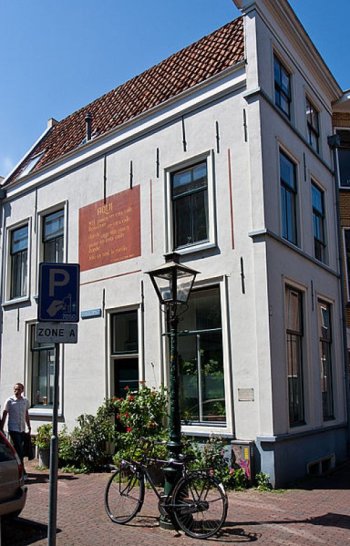History: Historical Timeline
Prehistory
| Date | Event |
|---|---|
| c. 13,000 BCE | Hunter-gatherers arrive to find dense forest, a mild climate, and numerous lakes. |
| 8000 BCE | Indigenous peoples grow maize, squash, beans, peppers, tomatoes, tobacco, and chocolate, among other crops. Increasingly sophisticated farmers begin to selectively breed various forms of maize. |
Early Civilizations
| Date | Event |
|---|---|
| 1400–400 BCE | The Olmec civilization develops an identifiable artistic style as part of a rich cultural life that may include the first writing in Mesoamerica. New groups branch off from the Olmecs, including the Maya, Zapotec, Totonac, and Teotihuacán civilizations. |
| 300 BCE | The Maya civilization rises and develops a complex political system comprising numerous villages and, eventually, large cities. The Maya produce an elite ruling class and build large temple complexes and ceremonial structures, many of which survive into the 21st century. |
| 100 BCE | The Teotihuacán civilization erects one of the world's largest cities, in which some 200,000 inhabitants live in complex housing structures, including multi-story buildings. Among the culture's achievements are large pyramids, colorful murals, and a thin, orange pottery that spreads throughout Mesoamerica. |
| 800–1000 CE | The Toltec culture develops a highly sophisticated society that produces elaborate artwork (the Nahuatl word "Toltec" translates to “artisan”), including 4-meter-tall (16-foot-tall), elaborately-carved columns depicting warriors. |
| 1325–1521 CE | The Mexica people settle in central Mexico, having migrated from the desert regions north of the Rio Grande, and establish the Aztec Empire. Their capital, Tenochititlán, grows into the world's largest city. The Aztecs use their highly developed martial skill to meet the need for continuous human sacrifice, believing that the well-being of the culture depends on the offering of human blood. At its peak, the Aztec Empire comprises some ten million people and stretches from coast to coast. |
Colonial Era
| Date | Event |
|---|---|
| 1511 | The first Europeans arrive, two survivors of a Spanish shipwreck who manage to stay alive until a later expedition rescues them. |
| 1517 | February 8. Francisco Hernández de Córdoba sets sail from Santiago de Cuba to explore Mexico's southern shoreline, and is the first European to make contact with the Maya. Unfortunately, the meeting isn't amicable, and many in the expedition are killed in battle. Hernández himself dies shortly after returning to Cuba from injuries sustained in the conflict. |
| 1519 | April 22. The era of Spanish domination of Mexico begins when Hernán Cortés arrives in the Yucatán with more than 450 soldiers. Trekking to the Gulf of Mexico, he establishes the city of Veracruz. By the end of the year, he leads his force toward Tenochtitlán, where he is welcomed by Moctezuma II, emperor of the Aztecs, whom he takes hostage. |
| 1521 | Spanish conquistadors defeat the Aztec civilization and take the city of Tenochtitlán, renaming it Mexico City and making it the capital of the colony of New Spain. Cortés captures the royal families and, fearful of a revolt, personally tortures and kills Cuauhtémoc, the last Aztec Emperor, as well as two other Aztec kings. Though the Aztecs are defeated relatively quickly, it takes much longer for the Spanish to suppress the Maya elsewhere in Mexico. |
| 1524 | After banning the practice of human sacrifice, the Spanish send Franciscan, Dominican, and Augustinian friars to begin converting the indigenous peoples to Catholicism. Along with the Viceroyalty of Peru, the Viceroyalty of New Spain quickly becomes one of the two seats of Spanish power in the New World, and the source of considerable wealth. |
| 1551 | September 21. The Spanish establish the Royal and Pontifical University of Mexico, the first institution of higher learning in the New World. |
| 1608 | When the Spanish run out of their imported brandy, Don Pedro Sánchez de Tagle, the Marquis of Altamira, begins large-scale cultivation of blue agave and mass-produces an ancient Aztec beverage near the town of Tequila in the first factory in Mexico. Seeing the potential to earn revenue for the crown, King Carlos IV of Spain grants the family of Jose Cuervo the first license to produce tequila on a commercial scale. |
| 1651 | November 12. Sister Juana Inés de la Cruz is born in New Spain. The Hieronymite nun becomes a self-taught scholar and writer who gains a reputation as the Tenth Muse when she publishes poetry that launches a rich tradition of Mexican literature. |
| 1788 | The Academy of San Carlos opens in Mexico City. With a focus on neoclassicism, the first art academy in the Americas emphasizes Greek and Roman art and architecture. |
| 1808 | The precursor of Mexican independence occurs across the Atlantic, when Napoléon Bonaparte deposes the Spanish king and installs his brother, Joseph, on the throne. The colonial government of New Spain is rudderless as anti-royalists begin to organize. |
Independence
| Date | Event |
|---|---|
| 1810 | September 16. A priest in the small village of Dolores calls for Mexican independence at a time when the colonial administration is fraught with factional strife. Father Miguel Hidalgo incites thousands to take arms and march toward Mexico City. They capture Guanajuato and other cities west of the capital, but are easily defeated by the more powerful forces of the colonial government. Though Hidalgo is killed in the fight, he is memorialized in the name of the future Mexican state of Hidalgo, and September 16 becomes the future Mexico's Independence Day. |
| 1814 | Father José Morelos, the successor to Hidalgo, proclaims an independent Mexican republic. Royalist forces led by General Agustín de Iturbide defeat his revolutionary militia. |
| 1821 | With Spain's colonial grip on the country severely weakened by political turmoil at home, General Iturbide accepts the notion of Mexican independence, but proposes that the country be organized as a limited monarchy, with himself as emperor, Roman Catholicism as the official state religion, and those of Spanish or mestizo (mixed) origins installed as a ruling elite. The last Spanish viceroy signs the Treaty of Córdoba, effectively ending Spanish colonial rule and marking the arrival of an independent Mexico. |
| 1823 | General Antonio López de Santa Anna deposes Iturbide and declares a republic, naming Guadalupe Victoria as Mexico's first president, who promptly executes Iturbide. So begins a decades-long struggle between conservative centralists who favor concentrating power in the central government, and more liberal federalists who prefer power to be distributed among the various states. This struggle is mirrored in numerous capitals across the former Spanish empire. |
| 1833 | After General Santa Anna successfully defends the country against an attempt by Spain to recapture its former colony, he is elected president. A strong centralist, Santa Anna's election is a blow to the independence-minded residents of Texas, who prefer to separate from Mexico and form an autonomous republic. |
| 1836 | Texas declares its independence from Mexico. Santa Anna sends his army to retake the rebellious state, only to be defeated at the hands of rebel leader Sam Houston. |
| 1846 | May 12. Hostilities between the US and Mexico over Texas, New Mexico, and California lead to a declaration of war by the United States. The United States not only captures those three territories, but General Winfield Scott marches all the way to Mexico City, ending the war. The peace treaty cedes nearly half of Mexico's territory to the United States. |
| 1857 | Santa Anna's defeat leads to a period of reform in Mexico, bringing to power the liberals and their federalist philosophy that weakens the central government and the influence of the Catholic Church, allows more freedom of speech, and grants universal male suffrage. Conservatives are so opposed to these reforms that a three-year civil war breaks out, further hobbling an already weakened country. |
| 1861 | When the liberals prevail in the war, President Benito Júarez suspends repayment of foreign debt to Great Britain, France, and Spain, prompting Napoléon III to send a force to occupy Mexico City and install Maximilian, the archduke of Austria, on the throne of the newly declared Mexican Empire. The US refuses to recognize the new order, considering President Júarez the legitimate leader. |
| 1877 | After driving out the French and executing Maximilian, Porfirio Díaz leads a revolt against the liberals and installs himself as president—in reality, a dictator—launching a quarter-century of rapid economic growth and commercial development. Though the country generates enormous wealth, it is concentrated among a small elite and foreign business-owners, leaving the vast majority of the country poor. |
| 1897 | Musician Gaspar Vargas forms Mariachi Vargas De Tecalitlán, a Mariachi band that rises to national fame. A world tour brings this uniquely Mexican music to an international audience. |
20th Century
| Date | Event |
|---|---|
| 1910 | November 20. When a wealthy lawyer named Fransicso Madero fails to unseat Díaz in the presidential election, he publishes a book calling for democratic elections and an end to dictatorship. The book incites the poor, illiterate masses to revolt, leading to a protracted period of conflict—the Mexican Revolution. Rebel leaders like Emiliano Zapata and Pancho Villa lead bands of fighters who defend the peasants and working class against government forces. |
| 1914 | Out of the chaos of the revolutionary era emerges José Venustiano Carranza, who ultimately defeats both Zapata and Villa, but fails to restore peace and prosperity. Mexico remains neutral in World War I, but the civil war drags on. |
| 1923 | After three years in power, General Álvaro Obregón is finally recognized as president by the United States after promising to protect US economic interests. He pushes through a series of social and economic reforms that benefit laborers and peasants, and major education reforms that lead to a flowering of Mexican culture and arts. |
| 1933 | Mexican painter Diego Rivera begins work on his mural, Man at the Crossroads, in a lobby of the newly built Rockefeller Center in New York City. Hailed as a masterpiece, the mural incites controversy when the artist refuses to remove a depiction of Vladimir Lenin, the Russian revolutionary, from the fresco. Nelson Rockefeller, a future New York Senator and US Vice President, has the mural destroyed. |
| 1934 | A former revolutionary general, Lázaro Cárdenas, assumes the presidency and launches significant reforms, including redistributing land to peasant farmers and nationalizing the oil industry. He also seizes the assets of numerous foreign-owned companies, seriously souring relations with the United States. |
| 1939 | The Louvre Museum in Paris, France, purchases The Frame, a painting by Mexican artist Frida Kahlo. It is the first work of a 20th century Mexican artist to hang in the Louvre. |
| 1940 | The conservative Manual Ávila Camacho succeeds Cárdenas and seeks better relations with the US. Mexico enters World War II on the side of the Allies and fights alongside US forces in the Philippines. By war's end, Mexico agrees to repay US oil companies for the business assets seized before the war. |
| 1946 | The ruling political party elects its first civilian president in more than three decades and renames itself the Partido Revolucionario Institucional (PRI). Mexico enjoys rapid post-war economic growth, although the benefits of the country's prosperity are concentrated among a small ruling class, while the majority of Mexicans remain impoverished. |
| 1952 | Ballet Folklórico de México is founded in Mexico City as an eight-dancer folkloric ballet ensemble. It eventually grows to more than fifty dancers and brings Mexico's rich tradition of elaborately-costumed folk dancing to a worldwide audience. |
| 1968 | October 2. Just 10 days before Mexico City is to host the Olympic Games, students protest income inequality and the lack of social justice and democracy under PRI rule. Security forces seeking to disperse the protesters open fire, killing at least 100 and possibly many more. |
| 1976 | When large reserves of oil are discovered off the Bay of Campeche, the government invests aggressively in industrial expansion, social welfare, and high-yield agriculture. Though the new oil field produces some one million barrels of crude per day, the quality is low and fails to generate sufficient income to meet the country's growing international debt, which now amounts to the world's largest. |
| 1985 | In the grip of a financial crisis, disaster strikes when an earthquake rocks Mexico City. As many as 10,000 are killed and the displaced number many times that. The PRI's failure to serve those affected by the temblor sparks widespread social unrest. |
| 1990 | The novelist Octavio Paz is awarded the Nobel Prize in Literature for his entire body of work, which includes his 1945 novel El Laberinto de la Soledad (The Labyrinth of Solitude). The New York Times describes it as "an analysis of modern Mexico and the Mexican personality in which he describes his fellow countrymen as instinctive nihilists who hide behind masks of solitude and ceremoniousness." |
| 1992 | December 17. Mexican President Carlos Salinas joins his counterparts from the US and Canada to sign the North American Free Trade Agreement (NAFTA), which facilitates trade among the countries but raises the ire of opposition parties, most notably the Partido Revolucionario Democrático (PRD). When the government is later accused of massive corruption, Salinas is forced from office and into exile abroad. |
| 1997 | The PRD manages to defeat the PRI candidate for mayor of Mexico City, sending shockwaves through the political class and announcing the vulnerability of the PRI after decades of unchallenged rule. |
| 2000 | The knockout blow to the PRI arrives with the election of Vicente Fox as president. Fox, leader of the Partido de Acción Nacional (PAN), is a reform-minded conservative who targets corruption and drug trafficking. |
21st Century
| Date | Event |
|---|---|
| 2003 | Rolling Stone magazine ranks Carlos Santana number 15 on the list of 100 Greatest Guitarists of All Time. The 10-time Grammy winner from Jalisco is the founder of the band, Santana, which produces many of rock music's best-known songs. |
| 2006 | Felipe Calderón of the PAN party narrowly wins the presidency and, in response to widespread opposition to his pro-business platform, begins to address the issues of social injustice and poverty that animate the left-leaning PRD. |
| 2010 | Aiming to prevent illegal immigrant crossings along the US-Mexico border, President Obama signs a $600 million bill to put more agents and troops along the border. |
| 2011 | Fifty-two people die in an attack at the Casino Royale in Monterrey, after armed men douse it in gasoline and set it on fire. No motive is known for the event that leads to three days of national mourning. |
| 2012 | July 1. Despite accusations of electoral fraud, Enrique Peña Nieto is elected president on promises of greater openness and transparency, returning the once-mighty PRI to power after a dozen years in the political wilderness. Though he publicly vows to reduce the power and violence of drug cartels, Peña Nieto's party has a history of making deals with organized criminal gangs in exchange for bribes and peace. |
| 2013 | Film director Alfonso Cuarón wins the Academy Award for Best Picture and Best Directing for his film, Gravity. He is the first Mexican to win the award for Best Directing. Thalia, the “queen of Mexican pop,” is honored with a star on the Hollywood Walk of Fame. In a career that spans nearly 30 years, she sells more than 40 million records, appears in several movies, and is the subject of a popular telenovela and children's cartoon series. |
| 2014 | Congress approves massive reforms to the energy sector that will open the field to foreign oil firms. State-owned energy group, Pemex, is stripped of the monopoly it's held since nationalization in 1938. September. Six die, 25 are injured and 43 male students from a teacher training college in Guerrero disappear after clashing with police en route to a political protest. Witnesses accuse state forces of involvement and the students were last seen in police trucks. The local mayor and his wife are suspects, after asking police to prevent the students from disrupting the political event. Hundreds of thousands take to the streets demanding President Enrique Peña Nieto's resignation and public outrage is worldwide. |
| 2015 | Ninety-seven people end up arrested in connection with the deaths and disappearances of 43 students from a Guerrero teacher's college, though the government rejects claims that federal officers were involved. Drug lord Joaquin "El Chapo" Guzman escapes from a high-security prison, his second prison break since 2001. |
| 2016 | March. The government says it will not pay for the wall that presidential candidate Donald Trump wants along the US-Mexico border. May. President Enrique Pena Nieto says proposals to reform the constitution will allow same sex marriages. |
| 2017 | January. After drug lord "El Chapo" Guzman is extradited to the US, rivals battling for control of Guzman's Sinaloa Cartel cause a spike in violence. |
| 2018 | Andres Manuel Lopez Obrador wins the presidency. Among his agenda is rooting out corruption, reducing violence, and spurring growth in impoverished areas. |
| 2019 | June. The Mexican government reports that about 15,000 people, most from Honduras, Guatemala and El Salvador, had been returned to Ciudad Juárez, Tijuana, and Mexicali under the US' Migrant Protection Protocols (MPP) program. In July, Mexican officials estimate that by the end of August, about 60,000 people will be sent back to Mexico by the United States, the majority of whom are Central American asylum seekers. July. According to data from Mexico's national public security office, murders in the country in the first half of the year jumped to the highest on record. |
| 2020 | February 27. Mexico confirms its first case of the deadly COVID-19 virus, the spread of which is declared a pandemic by the World Health Organization on March 11. March 21. The United States and Mexico announce a temporary ban on non-essential and leisure travel across the US–Mexican border in efforts to contain the spread of the coronavirus. |
| 2021 | June. One of the murderers of Mexican journalist Javier Valdez receives a 32-year prison sentence. Mexico’s supreme court strikes down laws that prohibit the use of recreational marijuana. August. The Mexican government sues six US gun manufacturers in a Massachusetts court, claiming negligence by the gun makers for failing to control distributors and that the illegal gun market in Mexico, “has been their economic lifeblood." Charges also include pandering to criminal gangs, with one Colt special edition pistol noted as being engraved with an image of Mexican revolutionary, Emiliano Zapata. |
| 2022 | June. 2022 becomes the deadliest year on record for members of Mexico's press when a twelfth journalist, 47-year-old Antonio de la Cruz, is shot and killed after leaving his home in Ciudad Victoria. In May, journalists Yessenia Mollinedo and Sheila Johana Garcia were murdered in Veracruz, with more than 150 journalists killed since 2000. |
Copyright © 1993—2024 World Trade Press. All rights reserved.

 Mexico
Mexico 